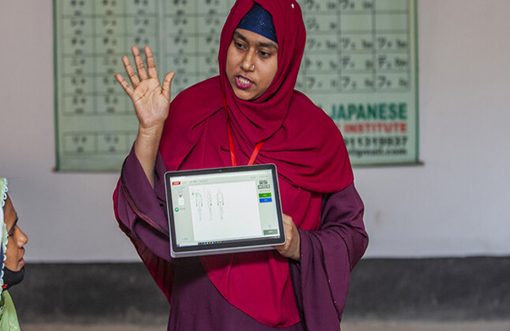Semiconductors can open a new horizon in export
With the consistent growth of Bangladesh’s IT sector in recent years, the country’s pursuit of becoming a knowledge-based economy has gained significant momentum. While labor-intensive sectors like the ready-made garment (RMG) industry continue to be a key driver of the economy, there is a growing need to expand focus to skill-intensive sectors in order to remain globally competitive and provide employment opportunities for the educated workforce. The burgeoning semiconductor industry holds immense promise in this regard.
The global semiconductor industry, serving as a lifeline for electronic devices and systems, is poised for exponential growth over the next decade. Presently valued at $664.2 billion, the market is projected to exceed $1.88 trillion by 2032, boasting an impressive compound annual growth rate (CAGR) of 12.30 %.
Bangladesh currently earns around $5 million annually from the semiconductor industry, primarily by providing integrated circuit (IC) design services, while more advanced services like fabrication, packaging, assembly, and testing remain untapped by local semiconductor companies. However, this achievement is not to be underestimated. The nascent industry, virtually non-existent two decades ago, has gained significant traction in recent years. If it has managed to generate $5 million in revenue within such a short period, there is ample reason to set ambitious goals for the semiconductor industry to catch up with the RMG industry over the long term.
Crucially, Bangladesh’s demographic advantage is already a significant asset for this endeavor. With a youthful population accounting for 28 % of the country, Bangladesh sees approximately 20,000 graduates in computer engineering and electrical and electronic engineering (EEE) each year. With proper training, they can fuel the growth of the semiconductor industry.
Nonetheless, there are several challenges to be overcome, with the most substantial being the substantial investment required for industry development. Like many tech-based sectors, the semiconductor industry demands significant capital, making it challenging for companies to expand without government support.
Given the immense potential of this sector, numerous countries worldwide have taken steps to develop their semiconductor bases. For example, the Indian government introduced the ‘Semicon’ program to promote semiconductor production in the country, offering incentives of 76,000 crore rupees. To propel our industry forward, Bangladesh government should consider similar initiatives for the future. It could also expedite semiconductor expansion by engaging in bilateral discussions with experts from countries like Taiwan, South Korea, and Japan.
Government recently unveiled its ambition to establish a $10 billion semiconductor industry by 2031. With the right support, Bangladesh’s semiconductor industry could even surpass this target. Similar to the support extended to the RMG industry during the 1980s and 1990s, including subsidies for electricity and gas supply, can provide momentum to our industry.
Presently, Bangladesh’s RMG industry generates over $45 billion in gross revenue annually, but it requires a workforce of five million to achieve this figure. In contrast, the semiconductor industry could achieve the same revenue with just around 100,000 engineers. This underscores the immense potential Bangladesh possesses in this thriving industry. It is high time we start shaping it as our gateway to a knowledge-based economy and a promising alternative to the long-standing RMG industry.





Comment here